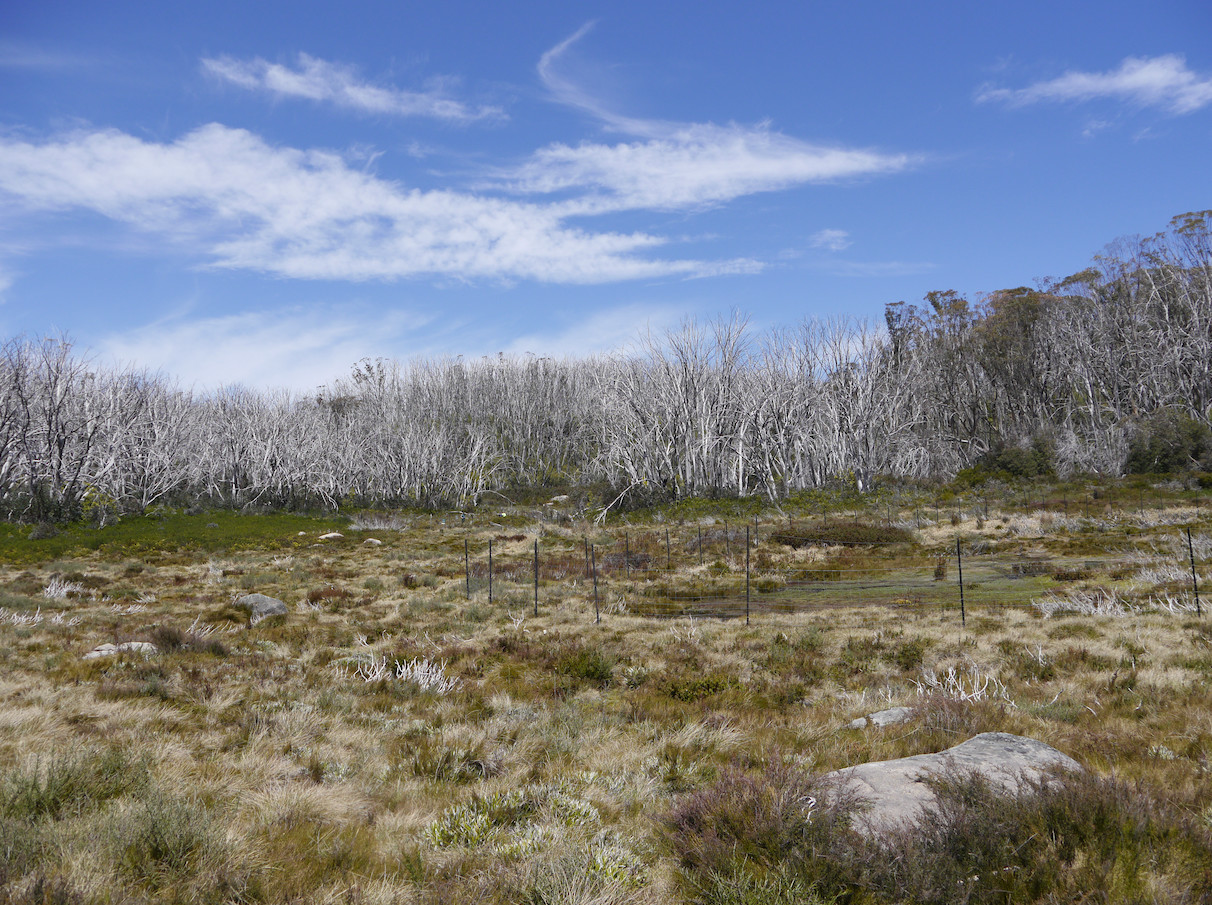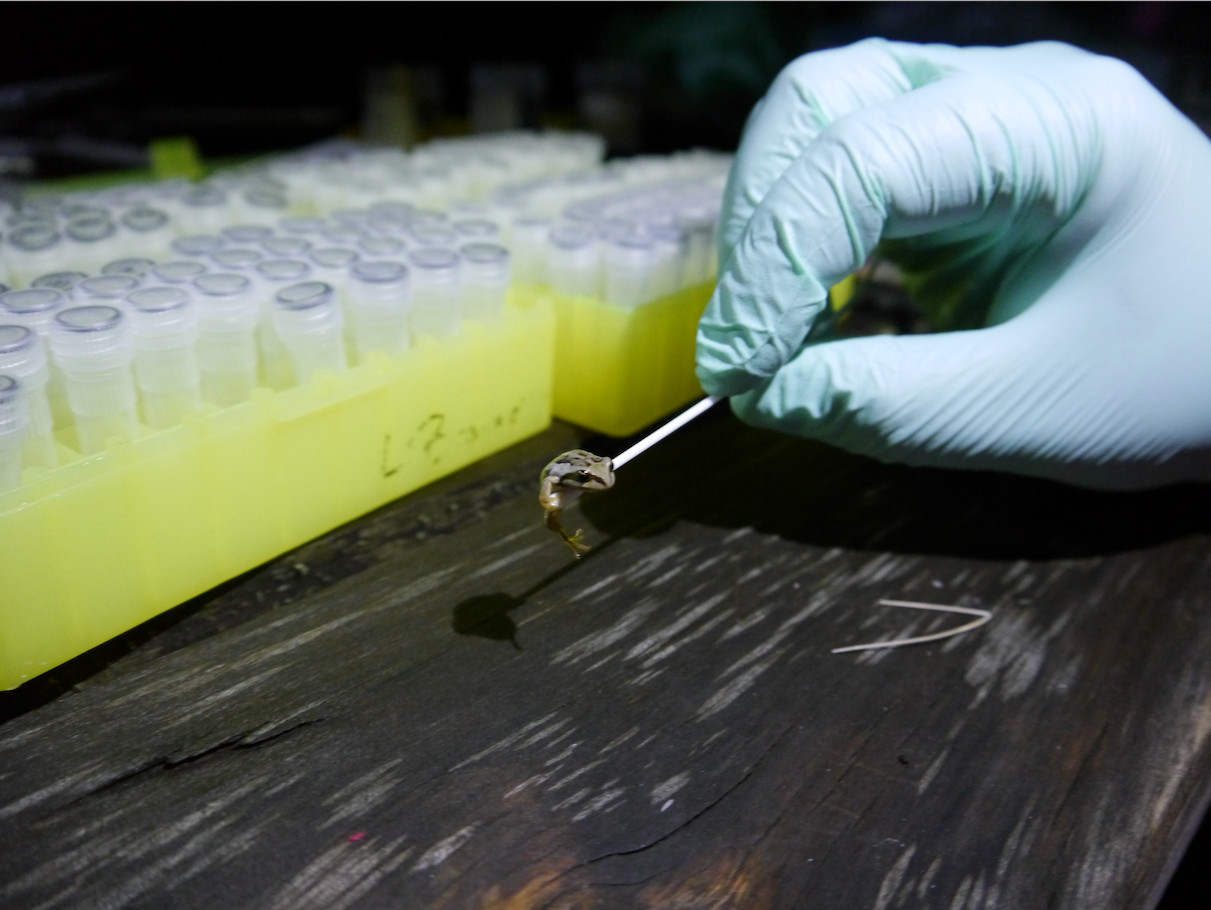
Sciences & Technology
Detecting amphibian pathogens in the water to boost frog conservation

A new study shows how some species survive infectious disease epidemics, and how we can use this knowledge to assist and direct wildlife management
Published 30 October 2020
Wildlife diseases are a major cause of wildlife decline around the world.
But despite their devastating effects, some wildlife species survive these disease epidemics and some populations even rebound, increasing their numbers.

Amphibians are some of the most threatened animals in the world, with over 30 per cent listed as vulnerable or endangered species on the International Union for Conservation of Nature (IUCN) list. And disease is a major cause of these declines.

Sciences & Technology
Detecting amphibian pathogens in the water to boost frog conservation
But why do some species survive and others don’t?
To help answer this, our research team decided to go through all of the relevant research literature to understand what makes a species thrive in natural conditions to improve species management outcomes, but also help avoid management mistakes.
We used amphibian declines as a case study for how best to understand the ways that species survive declines.
It turns out that for most species, we actually do not yet understand why they are persisting after disease caused declines.
This is partly because, as we show in our analysis, there is wide variation across species and life stages, which highlights the importance of community, where different species of frogs change disease impacts.
Even for species that have been heavily studied by different research teams, like the endangered common mist frog, Litoria rheocola, from the Australian tropics, we do not understand why some populations are surviving.

To help researchers better comprehend how species survive, we identified key criteria to guide future research that will help us understand the ways that populations rebound in the future.
We also show why we should use this information to improve management practices.

Environment
The threatened species in our urban jungle
Frogs are declining globally due to the fungal pathogen Batrachochytrium dendrobatidis, known as Bd. The Bd fungus causes the disease chytridiomycosis, which affects amphibian skin function.
Amphibian skin is especially important for frogs because they use it to breath, absorb water and even maintain ions in their blood. This disease causes thickening of their skin, and disrupts the normal skin function in infected frogs, ultimately causing death due to cardiac arrest.
Chytridiomycosis occurs globally and has resulted in declines in over 500 species around the world in the last 50 years and has even caused 90 species extinctions including some species in Australia like the gastric brooding frog.
Many other species remain on the verge of extinction like the southern corroboree frog, which requires management to remain in the wild, including breeding programs, reintroductions and habitat management.
Despite these massive declines, there are some species who declined but then survived and remained, like the alpine tree frog, Litoria verreauxii alpina.
This species used to be widespread in the Australian Alps, but now remains at a handful of locations, although has remained stable at those locations for a couple of decades following the initial epidemic.

In our latest study published in Ecology Letters, we highlight the conditions and traits that allow frogs to persist after an epidemic.

Sciences & Technology
The invasive fungus threatening Earth’s biodiversity
We found that frogs, like the alpine tree frog, can persist after their population has declined due to changes in the frog, such as through reproduction where infected animals actually increase their breeding behaviour or produce more offspring when infected.
Other frogs persist through increased resistance or tolerance to disease by evolving increased immunity or behaviour, such as avoiding disease or through regulating its body temperature by moving to warmer habitats or parts of habitats to help fight infection, a term called behavioural fever in ectotherms, commonly known as “cold-blooded” animals.
The habitat of the animals can also influence decline patterns because Bd thrives better in cooler, wetter habitats.
Frogs might also persist if virulence of the pathogen reduces over time which has not been observed but is possible.
And finally, an often overlooked way that animals can persist is through understanding how the disease is transmitted, and how the ecological community affects disease.

The ecological community includes the animals, plants and all other organisms in the frogs environment, and can include reservoir hosts that maintain disease in the system.

Reservoir hosts for the pathogen can be other species of frogs, but also include other organisms like crayfish that live with frogs. Reservoir hosts have a high tolerance to infection, meaning that they can carry high loads and not be impacted by the disease themselves.
In Australia a possible reservoir host is the southern brown frog, Litoria ewingii. And if a susceptible or threatened species, like the green and golden bell frog, Litoria aurea, live at sites with these reservoir hosts, then they might be more likely to decline.
Understanding the ways that species are persisting is important for management, because management actions will be more effective if we support how the animals are persisting naturally.
For example, the alpine tree frogs are surviving because they are prioritising breeding and reproduction over increased immunity. Since the arrival of chytridiomycosis, they are ensuring that they breed before succumbing to disease in a pond with permanent water, allowing the population to persist.
This means that management action should be focussed on supporting successful breeding and tadpole development and access to permanent water reserves.

Through our research, we highlight that even with multiple decades of well-intentioned research devoted to understanding the impacts of chytridiomycosis on frogs, we know very little about how most species actually are persisting.

Sciences & Technology
The story in the bones of lizards and frogs
Without information to understand the ways that species persist after disease related declines, deciding on management actions is complicated. And even more importantly, it could lead to failure and exacerbate declines.
For example, for a species that is persisting at a low frog density which reduces transmission of Bd, adding captive-reared individuals to populations might increase the frog density and therefore increase transmission and disease within the population.
Without understanding how a species is persisting naturally, we could completely mismanage these threatened animals, and possibly lead to further declines.
We highlight that both researchers and managers need to work together, and research should be aimed at understanding the mechanisms of population persistence.
By using this knowledge we can plan management actions to support the ecology and biology of the species we are trying to save.
This work is a multi-institutional collaboration across the University of Melbourne, Griffith University, Southern Cross University, and international collaborations in the US and Spain.
Banner: Plectrohyla dasypus, spike-thumb frog is critically endangered, Honduras/ Getty Images